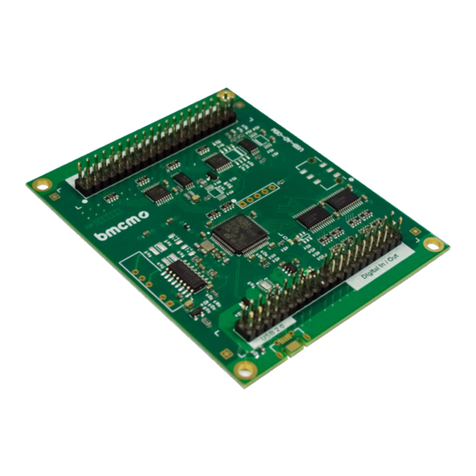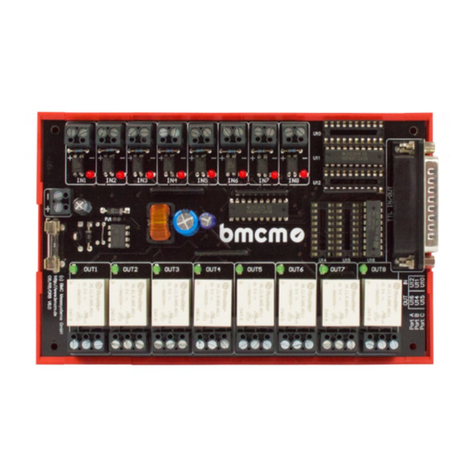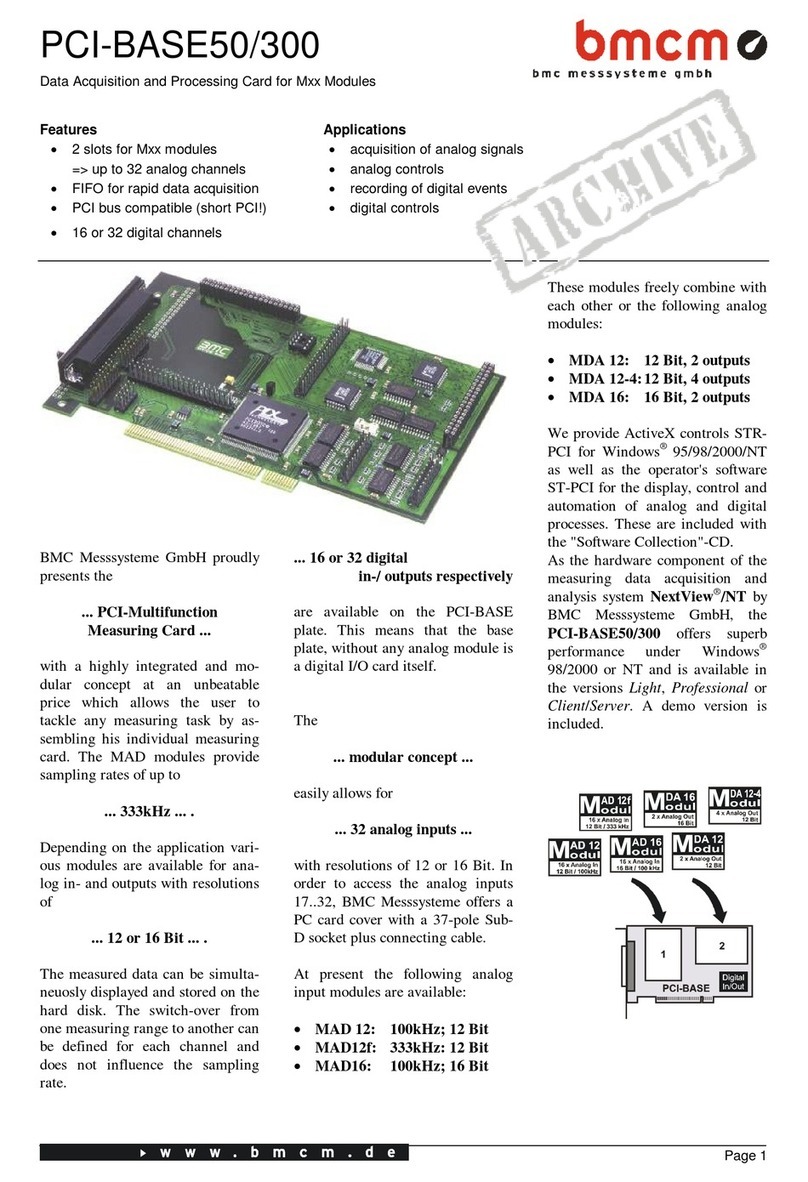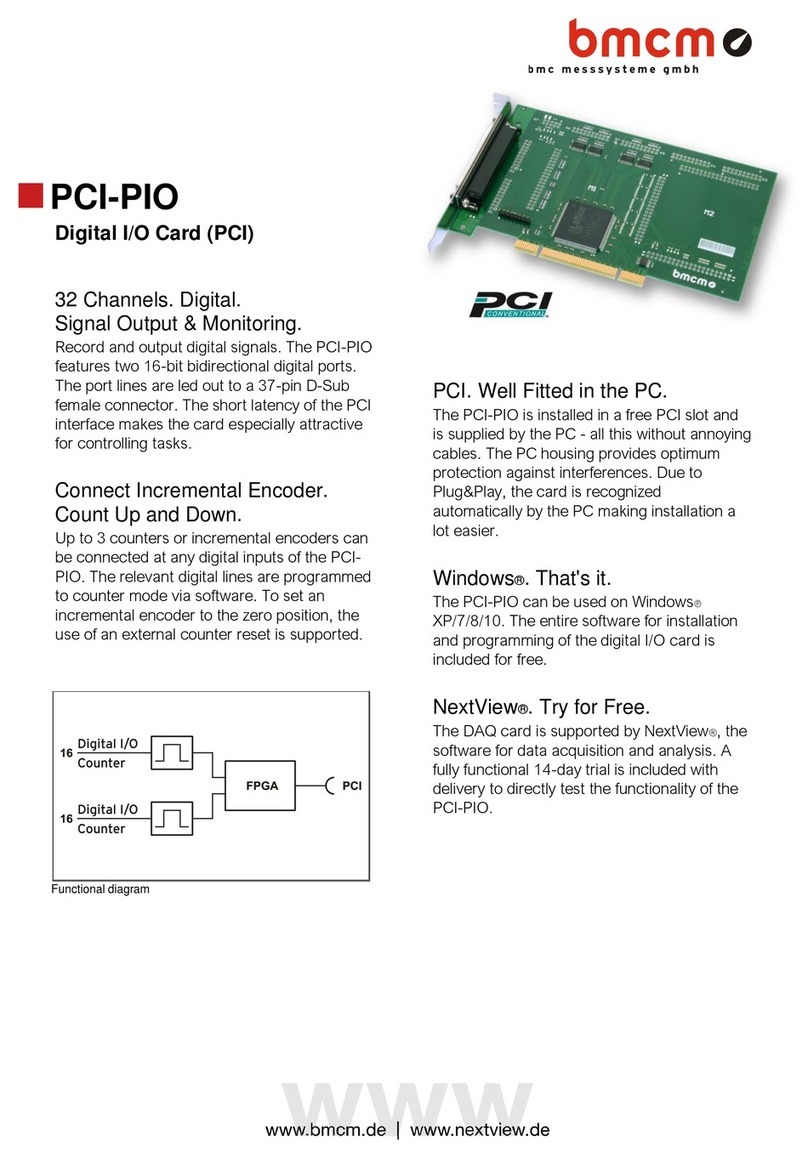PCIe-BASE
Data Acquisition and Control Card (PCIe)
Measurement & Control.
Multifunctional.
Stationary measurement data acquisition in
latest "PCI Express" technology: The PCIe-
BASE is a multifunctional data acquisition and
control card. Its modular structure guarantees
individual and flexible adjustment to a
measuring task.
Modular Concept. Optimize
Price-Performance-Ratio.
Perfectly adapted to the respective
measurement application, data acquisition
modules can be selected to equip the two
module slots of the
PCIe-BASE. It is the customer who decides
about performance and price of his DAQ
system!
Modules: MADDA. MDA. MCAN.
What Would You Like?
A great variety of analog plug-on modules is
available differing in the number of inputs and
outputs, resolution and sampling rate. If a
MADDA module e.g. is combined with a CAN
module, analog measurements and via the
CAN interface are possible. Analog, digital,
and CAN channels are sampled time-
synchronously.
32 Digital I/O. 3 Counters.
The PCIe-BASE features 32 digital lines, which
means that the base board is a digital I/O card
itself. The direction of the two 16-bit ports is
set via software. 3 counters accessible via any
digital inputs allow the acquisition of counting
pulses or the connection of incremental
encoders.
PCIe. Be on the Cutting Edge.
Designed in "PCIe x1" format, the PCIe-BASE
can be installed in any PCIe slot. In the long
term, this extremely powerful interface will
completely replace the predecessor "PCI" in
the PC. Due to Plug&Play, the card is
recognized automatically by the PC making
installation a lot easier.
Windows®. That's it.
The PCIe-BASE can be used on Windows®
XP/7/8/10. The entire software for installation
and programming of the multifunction card is
included for free.
NextView®. Try for Free.
The DAQ system is supported by NextView®,
the software for data acquisition and analysis.
A fully functional 14-day trial is included with
delivery to directly test the functionality of the
PCIe-BASE.
































